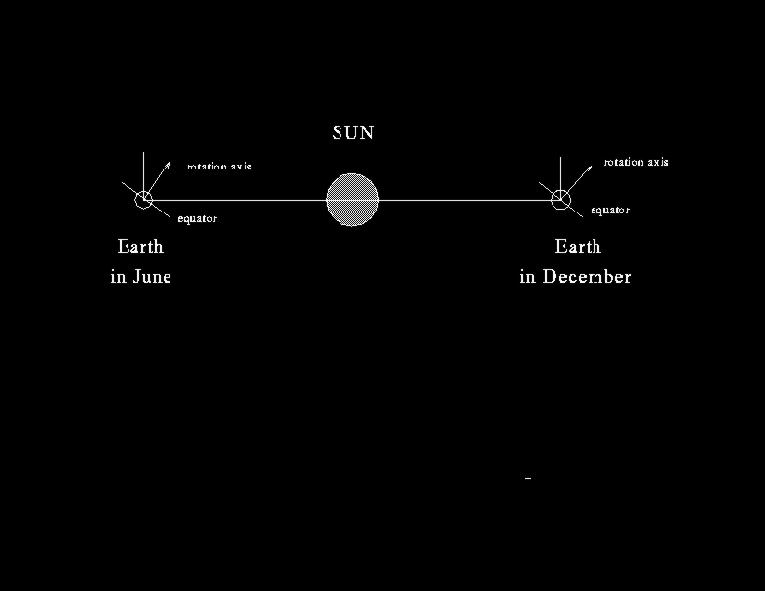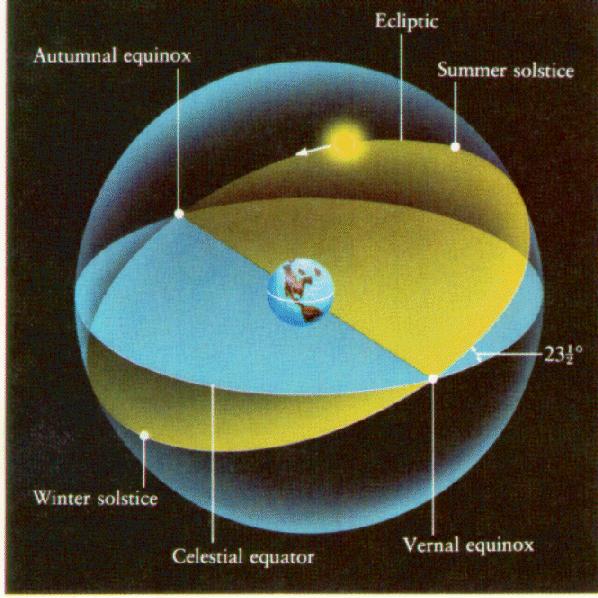
To define positions of objects on the Celestial Sphere, we use a system analogous to longitude and latitude. Because the spin axis of the Earth and the orbital axis of the Earth are not parallel (they form an angle = 23.5 degrees),

the Ecliptic and the Celestial Equator are inclined with respect to each other. This gives us some natural checkpoints on the sky (spheres have no ears to grab). We define the following points on the Celestial Sphere;

Vernal (Mar 21) and Autumnal (Sep 22) Equinoxes and Winter (Dec 22) and Summer (June 22) Solstices
The two equinoxes occur when the Sun passes through the Celestial Equator and the two solstices occur when the Sun is at its greatest distance above and below the Celestial Equator.